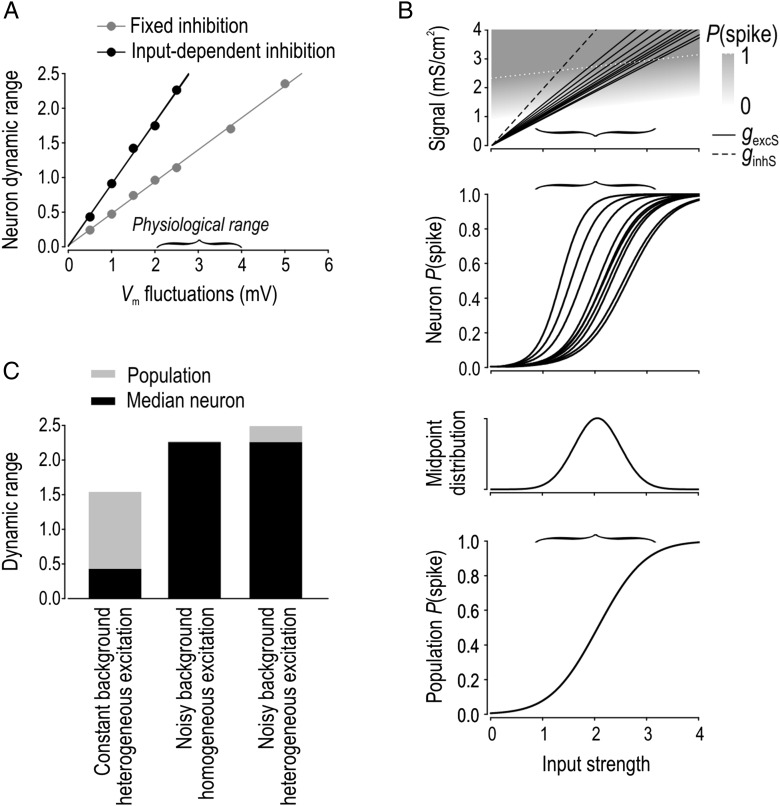Figure 5.
Computer simulations to test relative impact of heterogeneous excitation and background noise on population dynamic range. (A) Neuron dynamic range (defined by the input range over which P(spike) rises from 0.05 to 0.95) is plotted against noise amplitude quantified by the standard deviation of resultant membrane potential fluctuations. Dynamic range increases linearly with voltage fluctuation amplitude (r2 = 0.99). The slope of that relationship is modulated by feedforward inhibition. (B) Simulations like in Figure 4 with noisy background and heterogeneous excitation. Data are shown only for input-dependent inhibition, which is why the gray border is slanted. Notably, the dynamic range is not much larger than that observed for the comparable conditions but with homogeneous excitation. (C) Summary of neuron and population dynamic range for different combinations of excitation heterogeneity and background conditions, with input-dependent inhibition in all cases. Whereas heterogeneous excitation produced a broad population dynamic range when neuron dynamic range was narrow, it did little to expand the population dynamic range when neuron dynamic range was broad because of noise. These data argue that the effect of background noise on dynamic range occludes the effect of heterogeneous excitation.

